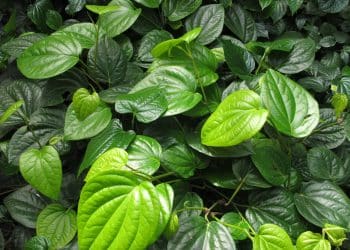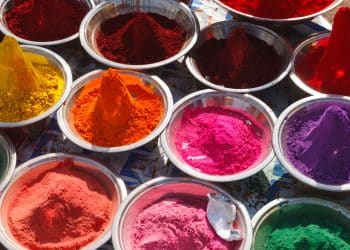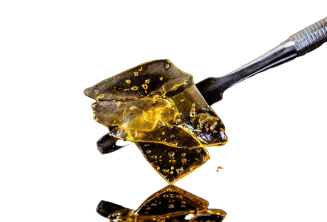Areca catechu is a plant belonging to the Arecaceae or Palmae family and its nuts are widely consumed in Asia thanks to their stimulant and psychoactive properties. It is commonly known with several names, depending on the country of consumption. Among these are chikni supari (Hindi and Bengali), Kamuku (Malayalam), Pukkumamaram (Tamil), areca nut, and betel nut (English).[1]
Psychoactive substances from North and South America (e.g. coca leaf, marijuana, tobacco…) are generally more popular in Western Society than the ones from Asia. Apart from Asian poppies, there is little to no knowledge of psychoactive substances coming from more eastern countries. [2] It is even more impressive if the fact that 10% of the world’s total population consumes areca nuts, making it the fourth most widely used drug after nicotine, ethanol, and caffeine. [3], [4]
The use of betel nut chewing has been widespread and is highly valued for its psychoactive properties. Furthermore, Areca catechu holds an important place in medicinal systems such as Ayurveda, Traditional Chinese Medicine, Homeopathy, and Unani [5].
Although it has many beneficial effects, in particular on the gastrointestinal apparatus, this substance has shown several drawbacks and governments have tried to take measures to reduce its consumption. Among these, Areca catechu, which is usually chewed in the form of gum, facilitates the development of oral cancer. [3]
Botany and phytochemistry
Areca catechu is an approximately 15-20 meters-high megaphanerophyte belonging to the family of Arecaceae. The plants’ solitary stems are erect, 10-20 cm in diameter, “woody” and gray with conspicuous nodes. The leaves are generally 8-12 in number and are on the top of the stem, they are binate and light green to green in color. Areca catechu is hermaphrodite and staminate and pistillate yellow flowers are clustered within the same inflorescence. The fruit is a fibrous, ovoid drupe, 5–10×3–5 cm in dimensions, with the color ranging from yellow to orange and turning to red when ripe. [1], [5], [6]
A. catechu is a native species of South and Southeast Asia and it is cultivated in many of this region’s countries. It needs loamy soils and it is usually cultivated in the plains, hill slopes, and low-lying valleys. The plant is mainly exported from Sri Lanka, Penang, Singapore, and Madras in large quantities [5].
More than 59 compounds have been isolated and identified from this plant. These chemical constituents are distributed in different parts of the plant and are distributed into alkaloids, fats, polyphenols, and starch. [5], [6] However, pyridine-like alkaloids and condensed tannins have been identified as the characteristic constituents of this plant.
In particular, it has been reported that A. catechu is the only species belonging to the Arecaceae family that presents alkaloids. In particular A. catechu’s most abundant alkaloid is arecoline (7.5 mg/g weight), a volatile and colorless compound resembling to nicotine for both structure and biochemical activity, followed by arecaidine (1.5 mg/g weight), guvacine (2.9 mg/g weight), and guvacoline (2.0 mg/g weight). Among polyphenols, both flavonoids (e.g. isorhamnetin, chrysoeriol, luteolin, and quercetin) and tannins (mainly catechin and epicatechin) are found. [1], [5], [6]
catechu extract is generally obtained using polar organic solvents, but the result is a mixture of different compounds.
However, many studies have been made to separate arecoline from the polyphenol extract and the total polyphenol content (TPC): arecoline is an important parameter to evaluate the safety of the extract. Indeed, while polyphenols are considered value-added compounds for their many beneficial biochemical activities, there is increasing literature on arecoline’s carcinogenicity. Hence, it has been found that acetone results in a maximum extraction of polyphenols and also in a minimum yield of arecoline, showing a maximum ratio of TPC: arecoline. On the other hand, arecoline’s maximum yield is obtained with water and alcohol. To increase the ratio TPC: arecoline innovative techniques such as ultrasound-assisted extraction (UAE) are used, selecting the solvent based on polyphenols’ solubility. [7], [8].
Traditional medicinal and recreational uses
The first record about betel nut use is a Ceylonese document dated back to 504 BC in which there is a story of a princess rewarding her nurse with a present of betel nut chew. A. catechu is frequently referred to in the Sanskrit ayurvedic medicinal tradition and later also in Hindu and Buddhist writings. [2]
In the actual ayurvedic therapeutic system, A. catechu is considered:
- a nervine tonic,
- a cardiotonic,
- an antiparasitic,
- wound-healer,
- good for many gastrointestinal diseases. [5]
It is also widely used for oral care as a toothpaste ingredient since it is believed to strengthen teeth, increase salivation, eliminate bad breath, improve taste, and is used as a mouth freshener. With the expansion of Buddhist practice, the use of betel nut spread out in southern Tibet and in southern China, where Traditional Chinese Medicine (TCM) monographs report the use of this plant already 1700 years ago. [2], [5], [6]
Furthermore, since 1953 the areca nut has been listed in the Pharmacopeia of the People’s Republic of China. The seed is the part of the plant most commonly used as a medicine. They can be processed (generally carbonized by stir-frying) or raw when administered as a decoction, an infusion, or a powder.
Currently, TCM uses the areca nut for the treatment of various gastrointestinal diseases (including abdominal distension, dyspepsia, dysentery, and constipation), parasitic diseases, and edematous disease. [6] During the Middle Ages betel nut was also popular in Arabic countries and in the 10th century Avicenna used it as a medicine. However, its diffusion was hampered by Islamic traditional prohibition against alcohol and other central stimulants. [2]
Besides medicinal uses, betel nut’s popularity is due to its psychoactive effects. Indeed, chewing the so-called “betel quid” reduces tension, produces a sense of well-being, and provides a means of social interaction and ritual.
Despite some variations, betel nut preparations (the chew, the quid) consist of three major ingredients: the nut of the palm tree Areca catechu, quicklime, usually in the form of burnt shell or coral, and the psychoactive leaf of certain plants such as Mitrogyna speciosa, Myristica fragrans, Piper methysticum and Piper betle. Even though largely unknown to the West until recently, it has been estimated that betel nut “chewers” might be around 200-400 million. [2], [9]
Biochemical activity and neurological effects
Areca nut biochemical activity is mainly related to the presence of the alkaloid arecoline and its derivatives. However, both Areca catechu and the other plants constituting betel quid contain compounds such as polyphenols that contribute to global biochemical activity
The main mode of arecoline metabolism is through hydrolysis to arecaidine. Other significant arecoline urinary metabolites are N-oxide derivatives and nitrosamines. [3] In addition, the alkalinity of lime itself causes a reduction of both arecoline and guvacoline to arecaidine and guvacine, respectively. [2]
Arecoline’s main activity is on the central and autonomic nervous system. Indeed, it possesses parasympathomimetic properties, stimulating both muscarinic and nicotinic receptors. Habitual users claimed effects such as:
- euphoria,
- a sense of well-being,
- warmth, increased alertness,
- salivation,
- palpitation,
- anti-migraine,
- enhanced capability to work.
Furthermore, areca nut causes habitual users withdrawal syndrome whose symptoms are similar to those of amphetamine use. Among them, insomnia, mood swings, irritability and anxiety. [3] Many studies have shown that betel quid chewing causes facial flush, a warm sensation of the body and sweating. The increased skin temperature from 0.5 to 2 °C is due to the areca nut-induced release of catecholamines from adrenal cromaffin cells. [3], [9]
Physiologically, these compounds coordinate the responses to environmental, metabolic, and emotional/psychologic stressors. Arecoline also blocks the high-density lipoprotein receptor and inhibits the uptake of low-density lipoprotein, thus leading to enhanced atherogenesis and coronary artery diseases. Finally, arecoline also presents endocrinal activity. Indeed, in large doses, it activates the hypothalamic-pituitary-adrenal (HPA) axis, similar to stress response, and in regular use causes hypothyroidism. [3]
Besides arecoline activity, arecaidine, guvacine, and guvacoline block the receptor and inhibit the uptake of gamma-aminobutyric acid (GABA). These results have been supported by studies on mice’s brain, where arecoline and guvacine have been shown to be substrate-competitive inhibitors of GABA uptake. This neurosuppressive activity contributes to the euphoric effect. [2], [3]
Finally, as previously mentioned, arecoline metabolism leads to the formation of nitrosamines in the mouth. These compounds are responsible for the increase of the probability of developing oral cancer in habitual users. This has been the main concern about betel nut use for governments that have tried to undertake a war against this substance [3]. Several studies have been to try to isolate arecoline from A. catechu extract to make it safer, but the resulting preparation would probably at least partially lose its narcotic effect and thus not be competitive with actual betel quid. [7]
References:
[1] A. Ansari et al., “Areca catechu: A phytopharmacological legwork”, 2021, John Wiley and Sons Inc. doi: 10.1002/fft2.70.
[2] N.-S. Chu, “Effects of Betel Chewing on the Central and Autonomic Nervous Systems,” 2001. [Online]. Available: www.karger.com/journals/jbs
[3] A. Garg, P. Chaturvedi, and P. C. Gupta, “A review of the systemic adverse effects of areca nut or betel nut”, 2014, Georg Thieme Verlag. doi: 10.4103/0971-5851.133702.
[4] R. J. Sullivan, J. S. Allen, C. Otto, J. Tiobech, and K. Nero, “Effects of chewing betel nut (Areca catechu) on the symptoms of people with schizophrenia in Palau, Micronesia”, 2000, British Journal of Psychiatry, 177, pp. 174–178, 2000, doi: 10.1192/bjp.177.2.174.
[5] M. Grover, “Areca catechu L. (Chikni Supari): A Review Based Upon its Ayurvedic and Pharmacological Properties”, 2021, The Journal of Phytopharmacology, 10 (5), pp. 338–344, Sep. 2021, doi: 10.31254/phyto.2021.10510.
[6] W. Peng et al., “Areca catechu L. (Arecaceae): A review of its traditional uses, botany, phytochemistry, pharmacology and toxicology”, 2015, Elsevier Ireland Ltd. doi: 10.1016/j.jep.2015.02.010.
[7] Y. V. Chavan and R. S. Singhal, “Separation of polyphenols and arecoline from areca nut (Areca catechu L.) by solvent extraction, its antioxidant activity, and identification of polyphenols”, 2013, J Sci Food Agric, 93(10), pp. 2580–2589. doi: 10.1002/jsfa.6081.
[8] Y. Chavan and R. S. Singhal, “Ultrasound-assisted extraction (UAE) of bioactives from arecanut (Areca catechu L.) and optimization study using response surface methodology”, 2013, Innovative Food Science and Emerging Technologies, 17, pp. 106–113. doi: 10.1016/j.ifset.2012.10.001.
[9] N. S. Chu, “Neurological aspects of areca and betel chewing”, 2002, Addiction Biology, pp. 111–114. doi: 10.1080/13556210120091473.












